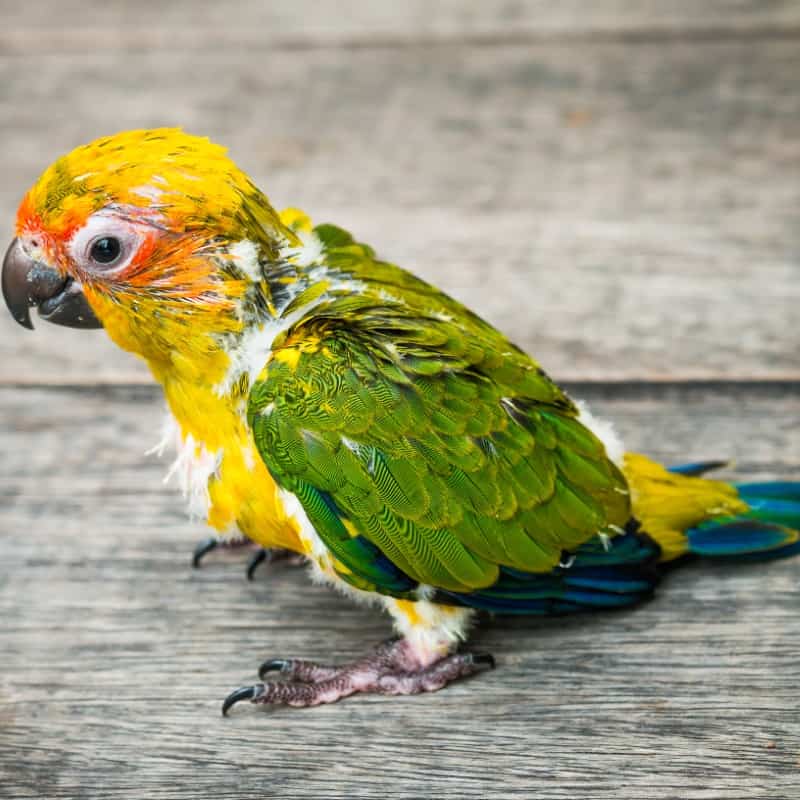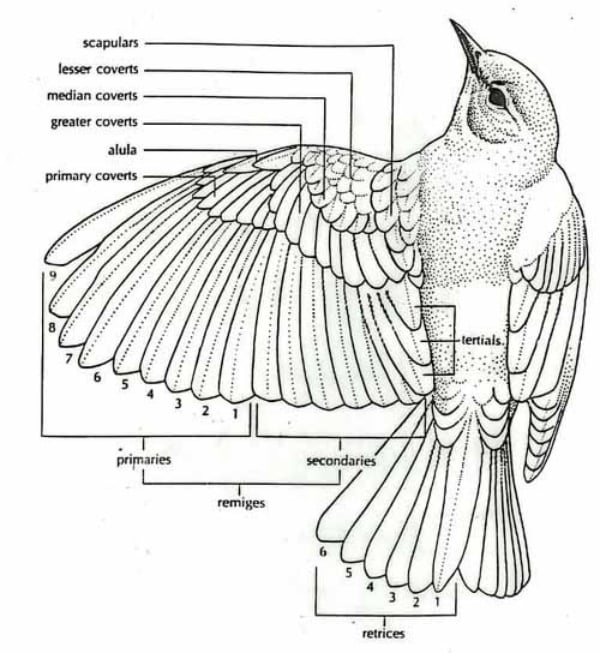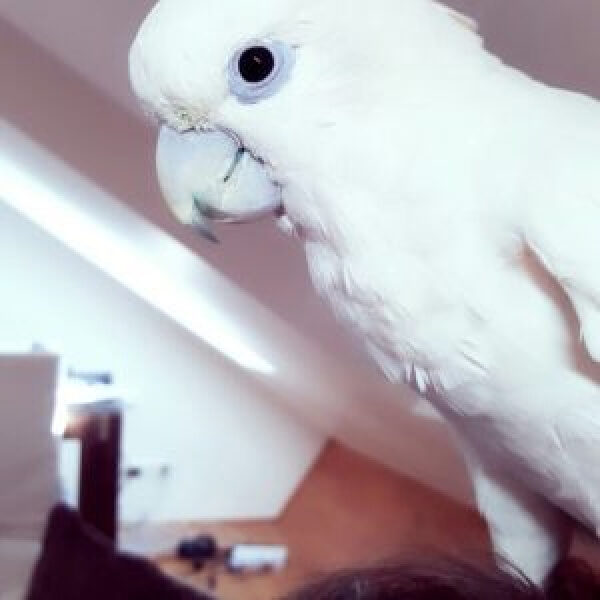
How Much Do You Understand About the Molt?
Last Updated on by Mitch Rezman
We’ve talked about the differences between molting, preening, and plucking in a post found here.
Molting is misunderstood and usually viewed as nothing more than a nuisance.
We have 10 birds in our home.
That means they’re going to shed between 50,000 and 70,000 feathers combined, annually!
Feathered factoid: Ducks have 10,000 or more feathers and swans have upwards of 12,000+.
If you have pet birds you deal with the molt.
As humans, our hair continually grows.
The feathers on our avian counterparts will grow to a certain size, based upon the position on the body and then maintain that size until the next molt.
Birds will lose and replace all the feathers on their body usually once a year.
Some species do it twice annually.
Species like African greys have an ongoing molt for upward of two years
I often hear the question, “I got my new bird with clipped wings how long will it be before they grow back”?
I posted this picture of an African ringneck that received a high-level engagement in a Facebook ringneck bird group.
A recurring comment on that post was “I never knew the underside of their wings looked like that.”
“How do you not know what color your bird’s feathers are”? He asked rhetorically.
Birds molt symmetrically losing the same feather on both the right side and the left side of their body almost simultaneously.
Thus you should be able to tell which feathers are being molted out by the size, shape, and color.
Look at a picture of Keto our ringneck’s head and you can see his new pin feathers beginning to grow in mid molt.
This process (the molt) costs an enormous amount of caloric energy from the animal because of all the feather production going on from amino acids derived from protein building the new feathers.
This is why we advocate for not using chop as a base diet, lack of protein.
So while you are whining about having to replace another vacuum bag, your bird is suffering physically and mentally from biologically manufacturing thousands of feathers.
This may or may not dovetail with negative hormonal behavior but it can resemble it.
Admit it, you are not the nicest person in the world when you are not feeling well, right?
If you have a female who happens to be going through the brooding process where her body is trying to create eggs, and additional caloric strain is put upon all of their systems while further weakening their body.
Here’s a diagram with the larger feathers defined.
We call the smaller ones, the little dandelion seed-like structures, down feathers.
Those are the ones that require precise vacuuming skills but somehow stick to the cage bars with an iron grip despite the absence of anything adhesive-like.
So to answer the folks who ask “when will my birds clipped feathers grow out”?
“They won’t, they will drop to the cage floor and be replaced by a new feather.
How long that takes is dependent upon your pet bird species.
Based upon our own unscientific observation, cockatiels will grow new flight feathers, replacing the clipped ones in about 30 days, 60 tops.
Senegal’s and Quakers need six months or more for their entire integumentary system (feathers) to be replaced.
Ringneck’s go through a 90 – 120-day molting cycle.
Now you know why it’s so important to pay attention to your bird’s behavior, especially during a molt.
Birds eating an all-seed diet should get an avian vitamin or supplement.
It is not necessary to switch your bird to pellets because you will find pellets in both Hagen and Higgins seed and fruit blend bird foods.
Someone recently asked Catherine “what’s the best pellets for my bird”?
Her response was eloquent and simplistic, “the one your bird will eat.”
Written by Mitch Rezman
Approved by Catherine Tobsing
Author Profile
Latest entries
 The Traveling BirdJune 26, 2025Can You Name 5 Parrot Species That Are Living Wild in the USA?
The Traveling BirdJune 26, 2025Can You Name 5 Parrot Species That Are Living Wild in the USA? Bird BehaviorJune 26, 2025How is it Parrots Are Problem Solvers Social Animals and Even Use Tools?
Bird BehaviorJune 26, 2025How is it Parrots Are Problem Solvers Social Animals and Even Use Tools? Bird & Parrot AnatomyJune 25, 2025How a Tiny Chemical Modification Makes Parrots Nature’s Living Paintings
Bird & Parrot AnatomyJune 25, 2025How a Tiny Chemical Modification Makes Parrots Nature’s Living Paintings PigeonsJune 20, 2025How Do Parrots Thrive in Cities Outside Their Native Habitats?
PigeonsJune 20, 2025How Do Parrots Thrive in Cities Outside Their Native Habitats?





